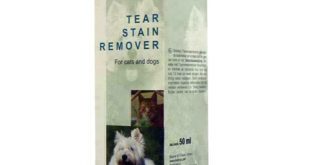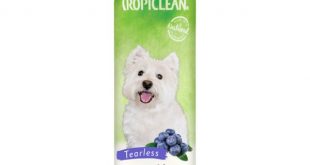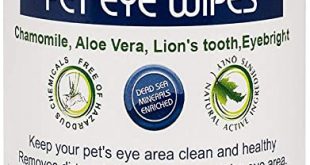No matter how hygienic your dog is, it’s always susceptible to infections. There’s always a chance that bacteria might decide your pup is the perfect host. The most common manifestation of this is tear stains. When that happens, you need to be ready. You need to have a strong, safe antibiotic to fight them off. This is the reason you can find Tylosin in so many medicine cabinets around the world in various forms: powdered and liquid. It’s the go-to antibiotic for dog owners. If you’ve never used it or you’re a new dog owner, you’re probably a bit skeptical. You need more information before you introduce something new into your pup’s body. In this article we will be focusing on the benefits of Tylosin 200 mg, 100 injectable ml.
What is Tylosin?
Tylosin is an organically-produced antibiotic that’s been on the market for decades. Originally, it was manufactured with the purpose of treating infections like colitis, intestinal bacteria, and soft tissue infections. Nowadays, Tylosin 100ml is more commonly used to treat tear stains and bacterial infections in a variety of animals. In fact, it’s one of the best tear stain removal products on the market.
How does Tylosin 200 mg, 100 ml Injectable work?
First and foremost, Tylosin Injectable 200mg, 100ml is an antibiotic. That means it fights bacteria. However, this antibiotic, in particular, doesn’t exactly kill bacteria. It works by inhibiting their growth, essentially making them few and weak, allowing your pup’s immune system to kill them. The question is: how does Tylosin 200 mg, 100 ml Injectable help with your dog’s tear stains? Well, one of the main causes of tear stains in dogs is bacterial infections.
Whenever your pup secretes an excess number of tears, this creates a medium around the eyes that is ripe for bacterial infections. Once bacteria settle down, they start to grow, and sooner or later, your pup will develop tear stains. That’s why Tylosin ml Injectable is so effective at getting rid of tear stains. By stopping the problem at its source, which is the bacteria, it’s essentially guaranteeing your pup remains stain-free.
How much Tylosin should I give my dog?
When it comes down to deciding what dose of Tylosin to give your dog, there are several factors to consider. It depends on your pup’s age and weight as well as the severity of the tear stains or other problems. The dose for tear stains is different from the dose for digestive or colic problems. Most of the time, you’ll find the proper dosing instructions printed on the side of the Tylosin bottle.
That being said, based on research, the average dose of Tylosin should be around 15mg/kg. Sure, some dogs can be treated with a higher dose up to 25mg/kg, and some only need 5mg/kg, but from practice, 15mg/kg is just fine. When in doubt, it’s better to ask a vet for clear, specific instructions. After all, we don’t want to take any risks with our furry buddies.
Are there any side effects of Tylosin?
Let’s be clear on one thing: very few products are free from side effects. As long as you’re choosing a medication for a disease, be it Tylosin or any other medicine, there are bound to be some side effects. The smart thing to do is choose one with the least problems. That’s the great thing about Tylosin. You see, while Tylosin might have some side effects like diarrhea, for instance, these side effects usually appear with long term use.
To be fair, this isn’t just an issue with Tylosin. It happens with all kinds of antibiotics. If you or your dog take any kind of antibiotic for a long time, your body becomes resistant. It’s like the bacteria get used to the antibiotic and they start finding ways to fight back. That’s why you shouldn’t use Tylosin for too long. Besides, it’s pretty effective so you won’t need that many doses before it gets the job done.
Is Tylosin 200 mg, 100 ml Injectable only used for Tear Stains?
Tylosin is a broad-spectrum antibiotic. That means it covers several kinds of bacteria. Naturally, you’ll find it has many therapeutic uses. It has the ability to fight off the cause of many infections and digestive disorders like chronic diarrhea, colitis, inflammatory bowel disease, and exocrine pancreatic insufficiency. This is thanks to its unique soothing and anti-inflammatory properties. All those painful, unpleasant symptoms will be gone in no time.
How do you administer Tylosin?
While there is an injectable form of Tylosin, most dog owners prefer oral dosage forms. It’s just easier. That’s why you’ll find Tylosin mainly in the form of powder-filled capsules or soluble powders for reconstitution. Of course, manufacturers add a little bit of flavoring to help mask the strong taste and make it more palatable.
Is Tylosin Safe for Dogs
While Tylosin hasn’t been approved by the FDA yet, that doesn’t mean it’s not safe. Most veterinary professionals around the world are convinced that it’s perfectly safe. In fact, it’s one of the top recommended products on the market.
Frequently Asked Questions
Does Tylosin cause diarrhea or treat it?
This is going to sound really weird, but the answer is both. Here’s how. Dogs that suffer from digestive disorders such as colitis, inflammatory bowel disease, and EPI often experience diarrhea. In some cases, you’ll find your pup is unresponsive to most medications. Most medications, that is, except Tylosin. It often works like magic when other medicines are found unreliable. In fact, some symptoms return if your pup stops taking Tylosin too soon.
So why do people say Tylosin causes diarrhea if it’s supposed to treat it? Well, the secret lies in how long you use Tylosin. Like with any antibiotic, prolonged use causes harm to your dog’s beneficial intestinal bacteria. Sooner or later, diarrhea develops. As long as you don’t overuse Tylosin, you should be safe from its side effects.
Conclusion
There are tons of uses for Tylosin. Whether your dog has gastrointestinal disorders or a bad case of tear stains, you can count on this wonder antibiotic to get the job done. It’s pretty safe and recommended by physicians all around the world. Just make sure you follow the proper dosing and remember the golden rule: when in doubt, always ask your vet.
 Total Pooch Dog Supplements, Tear Stain Removers, De-wormers, Tylosin for Dogs and other great products.
Total Pooch Dog Supplements, Tear Stain Removers, De-wormers, Tylosin for Dogs and other great products.



